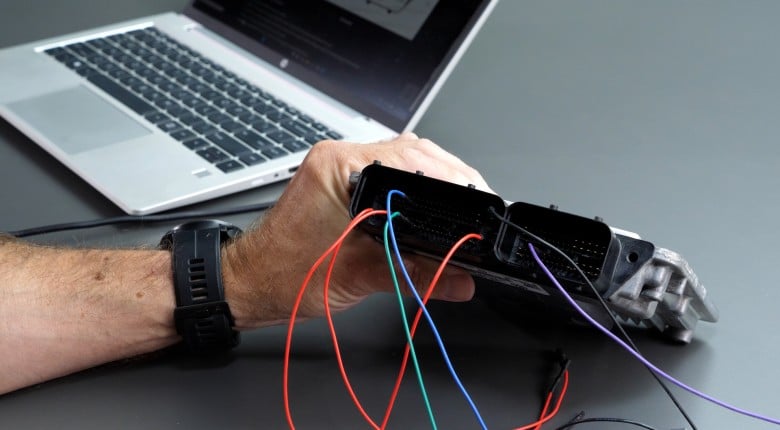It's no good having software and interface tools to edit your ECU data if you cannot read or write to it.
Reflash tuning is more popular than ever thanks to advances in software and interface capabilities, along with the fact it is harder and harder to fit a standalone ECU to a street-driven vehicle if you don't want it stripped out, as Jan Buyse from Autotuner helps explain along with the 3 main methods used to interface with an ECU for reflash tuning. They are via the OBD2 port, BDM (background debug mode) or bench tuning. All come with their own pros and cons, as well as risks of 'bricking' an ECU, which isn't necessarily unrecoverable, as explained.
We dive into what products like Autotuner are, why they are popular with commercial tuners along with how the master and slave system works for tuners. We also discuss the use of binary editors, like WinOLS, which Autotuner works hand in hand with as well as some of the differences between the likes of the European tuning market vs the United States.
------------------------------------
TIME STAMPS:
0:00 - Reflashing Is The Go-To
0:21 - Autotuner
0:27 - Why A Secretive Industry
1:47 - Why Is The Euro Market Different?
4:29 - What Is Autotuner
5:48 - Used With WinOLS & Similar Binary Editors
6:40 - What Is WinOLS?
7:05 - Different To Tuning
7:21 - Map Packs
8:10 - Whole Process Worth Learning
9:00 - File Services: Master & Slave
10:37 - Pros & Cons
11:48 - Over Time, More Masters
12:44 - File Services: Some Are Better Than Others
13:17 - Why Use This Alternative (If you have other options)?
14:53 - B2B No Ongoing Costs: Upfront Only
17:06 - OBD2 Vs Bench Vs BDM
17:22 - OBD2 & It’s Limitations
18:59 - Start Fresh
19:28 - Bench Read
21:20 - ‘Bricking’ Avoidance
22:37 - BDM - Background Debug Mode
24:31 - Data Logging & Analysis
27:19 - Thanks Jan!
28:00 - The More You Know The Faster You Go!







Comments
No one has commented on this page yet.